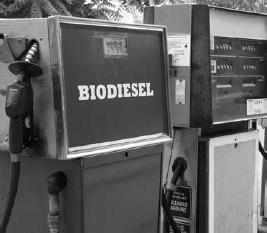EnergyFossil Fuels |
When did gasoline stations open? |
The first service station (or garage) was opened in Bordeaux, France, in December 1895 by A. Barol. It provided overnight parking, repair service, and refills of oil and “motor spirit.” In April 1897 a parking and refueling establishment—Brighton Cycle and Motor Co.—opened in Brighton, England.
The pump that would be used to eventually dispense gasoline was devised by Sylanus Bowser of Fort Wayne, Indiana, in September 1885; it originally dispensed kerosene. Twenty years later Bowser manufactured the first self-regulating gasoline pump. In 1912, a Standard Oil of Louisiana superstation opened in Memphis, Tennessee, featuring 13 pumps, a ladies’ restroom, and a maid who served ice water to waiting customers. On December 1, 1913, in Pittsburgh, Pennsylvania, the Gulf Refining Company opened the first drive-in station as a 24-hour-a-day operation. Only 30 gallons (114 liters) of gasoline were sold the first day.
The emissions of gasoline are a major source of air pollution in most U.S. urban areas. Researchers are investigating alternative fuels, which are cleaner, yet also economical. Alternative fuels include ethanol, methanol, biodiesel, compressed natural gas, electricity, and hydrogen. Currently, none of the alternatives delivers as much energy content as gasoline, so more of each of these fuels must be consumed to equal the distance that the energy of gasoline propels the automobile. Some predict that in the future families may have different vehicles that use different fuels for different types of driving. For example, electric or hybrids for short trips, an ethanol/electric hybrid for longer trips, and a biodiesel vehicle for hauling large loads.
| Alternative | Advantages | Disadvantages |
| Biodiesel from vegetable oils | Cleaner than petrodiesel; reduced emissions | Cost of pure biodiesel; blends (B30) turn into solids in low temperatures |
| Electricity from batteries | No vehicle emissions, good for stop-and-go driving | Short-lived bulky batteries; limited trip range |
| Ethanol from corn, | Relatively clean fuel | Costs; corrosive damage biomass, etc. |
| Hydrogen from electrolysis, etc. | Plentiful supply; non-toxic emissions | High cost; highly flammable |
| Methanol from methanol gas, coal, biomass, wood | Cleaner combustion; less volatile | Corrosive; some irritant emissions |
| Natural gas from hydrocarbons and petroleum deposits | Cheaper on energy basis; relatively clean | Cost to adapt vehicle; bulky storage; sluggish performance |
| Propane(liquefied petroleum gas) | Cleaner; good supply from domestic sources; less expensive | Vehicles must be retrofitted less readily available |

